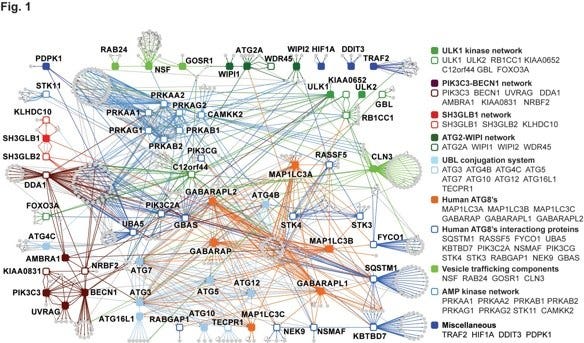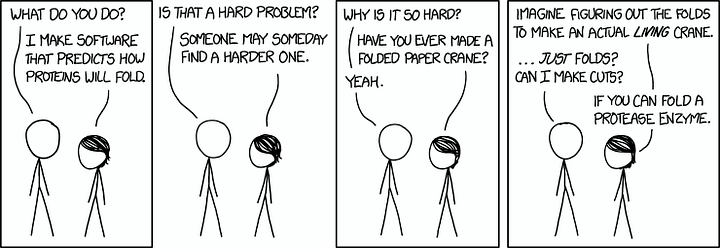The Company Your Proteins Keep May Kill You or Make You Live Longer
This week, Draper Esprit has announced that it is leading a significant investment round ($31m) into Cambridge (UK) based Fluidic Analytics to help it scale fast. BGF and Delin Ventures have joined our syndicate; existing investors IQ Capital and Amadeus have joined the round. Strategically, Fluidic Analytics fits within Draper Esprit’s deep tech/healthtech investing focus. Just like Graphcore and Evonetix, Fluidic Analytics is using deep technical knowledge and strong intellectual property (17 families of granted and applied patents) to attack a very large global problem.
Here Is the Back Story:
In 2014, I met with Andrew Lynn and Tuomas Knowles in Cambridge. They were raising the first round of financing for Fluidic Analytics which they had just spun out. Tuomas, a brilliant professor of physical chemistry and biophysics and now also a member of the famous Cavendish Lab had invented a completely novel way of separating proteins. Andrew had done his PhD in Cambridge and then had been CEO of two other successful startups at an unfeasibly young age. What they showed me was a Rube Goldbergesque rig (see picture below) on a bench-top and some patents which allowed them to separate proteins using a method that has never been used before.
The premise of Fluidic Analytics, which was later reduced to practice in the form of a machine which is now being sold to scientists is pretty straight forward:
“We will help you look at the protein social network of your interest in as close to its native format as is possible”
Since the first funding, the Company has made exceptional progress, with their first machine in the market selling to labs around the world. During these years, they have raised a total of around $41m so far. Fluidic’s achievement in this goes beyond building a fantastic machine — they have built something that is so easy to use an 8-year-old can do an experiment with it (we tried it with a real 8-year-old).
Building new platforms is hard but if you decide to build them then it also allows innovation at many different levels. From the time the device was conceived, we all agreed that we are on the edge of every science becoming data science and that connectivity and data collection will be built from the ground up. At its heart, Fluidic Analytics is an IOT device running Android operating system and allows remote software updates and fault detection. Users can centralise their data collection including meta data to make their experimental data usable for AI/Machine Learning which they will no-doubt want to do. Even if they don’t know it yet 🙂

Back to Protein Social Networks:
No one knows how many different proteins participate in the various different processes that take place in your body to keep you healthy or cause disease. No, seriously. Estimates range from a few thousands to several million. These include variants of normal proteins, aggregated polymers of single proteins etc. We are living the legacy of simpler times. It wasn’t a long time ago when we thought that each protein in our body was a product of a single gene and if we knew how many genes we had, we would know how many proteins we have. As with everything in biology things are a little more complicated.
How complicated? This complicated 👇🏻

Anything But Simple
When it comes to complexity, proteins are the masters of complexity. Not only is it impossible to tell what the protein will look like just by looking at the DNA that encodes it, many proteins don’t have just one shape, but also they shape shift depending on the environment they are in. Further, enzymes (which are also proteins) can cut proteins into different pieces and each piece can have a different function which may be very different from the function of the original protein. Proteins can also connect (bind) to other proteins (or antibodies, which are also proteins!) to form ‘social networks’ of a certain type and these social networks determine how a specific process will happen in a human. If your ‘social network’ is different from mine I may get a disease and you may not. Or a new drug may work for me and not for you.
In other words, social networks of proteins are just as complex as teenage social networks but with even more (life and death) drama.

Technique Matters:
Over the last several years, as our knowledge and understanding of biology has improved the need to understand these social networks has become apparent, but the real challenge is that we didn’t really have most effective tools to study them.
There are many tools to study proteins that are used in labs. Most of them have two things in common: they are old and very slow. For example, Mass Spectroscopy came out of original research from late 19th century and evolved as a technique in 20th century (JJ Thompson, a British scientist received a Nobel prize for the discovery of the basic phenomenon behind Mass Spectroscopy in 1906!). Mass Spectroscopy was considered so important for science that it has led to two further Nobel Prizes shared by three other scientists. Other techniques like the Bradford Assay, 2D Gel Electrophoresis or Western Blot were all invented in the 70s.
There is another paradox at the heart of these techniques. In order to use these slow and laborious techniques to study the molecules of life, you have to first kill them. These methods are mostly destructive. Which means that you break the protein (and their networks and their relationships) and then study the rotting carcasses to determine what the living network would have looked like. It is not an exaggeration to say that we have only been able to understand what would seem to be just the basics of protein function, and that there are large and critical parts of biology undiscovered and in many cases undiscoverable.
These are the parts where undiscovered diseases , new drugs, new insights lie. In a short period of time, Fluidic Analytics has been able to uncover some of them but the real picture will unfold over months to year.
The whole speed and scale revolution that happened in genomics over the last decade or so is only happening in proteins now, and Fluidic Analytics is a leading player in that space. The Illumina, the Solexa, the 23&Me, and others of the protein world are just ramping up.
Fluidic Analytics’ novel, patented approach is unique and gives more information about each biological reaction than most other techniques. These protein interactions are studied when proteins are as close to natural state as possible, and on the basis of the physical properties that actually determine function. This opens many ways that it can create value. As any startup, Fluidic is focusing on the key value creating applications over next couple of years and partnering with others on the remaining ones. The ultimate goal is to be able to read a protein fingerprint from any biological sample in minutes.
Real World Applications
- Lab Tools: The first application for Fluidic’s technology is in the lab tools space. They have a razor/razor blade business model where they sell an instrument and then consumables to labs around the world. This is a tried and tested business model for such a technology. This is a way to establish the company’s platform in the market.
- Clinical Applications: Fluidic’s unique ability to extract large amounts of data is helpful in being able to get deeper insights which can be extremely valuable. For example, will a transplant organ get rejected or accepted by a recipient? Or, will an immune-mediated drug work in a specific patient or not? These high value questions, if answered in time can save lives (and if you are a hospital administrator reading this blog, money$$) and ease of use and speed makes Fluidic well placed to exploit this segment.
- Diseases Associated with Protein Function: Just as normal protein function is necessary for normal functioning of your body systems, protein malformations can lead to a range of conditions from minor inconveniences to life-threatening conditions. Protein malformations are the cause of Mad Cow Disease; polymerisation of proteins causes a number of disorders but the most well known of them is Alzheimer’s Disease (Fluidic Analytics is not developing a cure for it yet but will work with partners to help them do it).
- Protein Antibody Interactions: Some of the worlds biggest selling drugs are antibodies (top three combined have revenues of ~$30billion a year — earlier this post said 30m — reminded me of this scene) that bind to proteins to change biological processes. These antibodies interact with their targets in complex ways but we only understand them in their simplest form. Over the last few years, we have become very good at making antibodies for protein targets, within weeks, you can generate a billion new enzymes but you then have to choose one that is best for your purpose. A binding event between the two, using current methods generates a handful of data points. Fluidic’s technology generates a continuous stream of data which can help pick better antibodies.
- Protein Protein Interactions / Drug Discovery: Developing new drugs is a struggle which is getting harder and one of the reasons is that we have exhausted the low hanging fruit of our limited clunky methods. New methods which give more nuanced information of how proteins interact with other players in our body are opening new avenues to address disease. For example, knowing how proteins are degraded in our body is important to understand a large number of brain diseases. Fluidic’s platform can extract that information better than any we know.